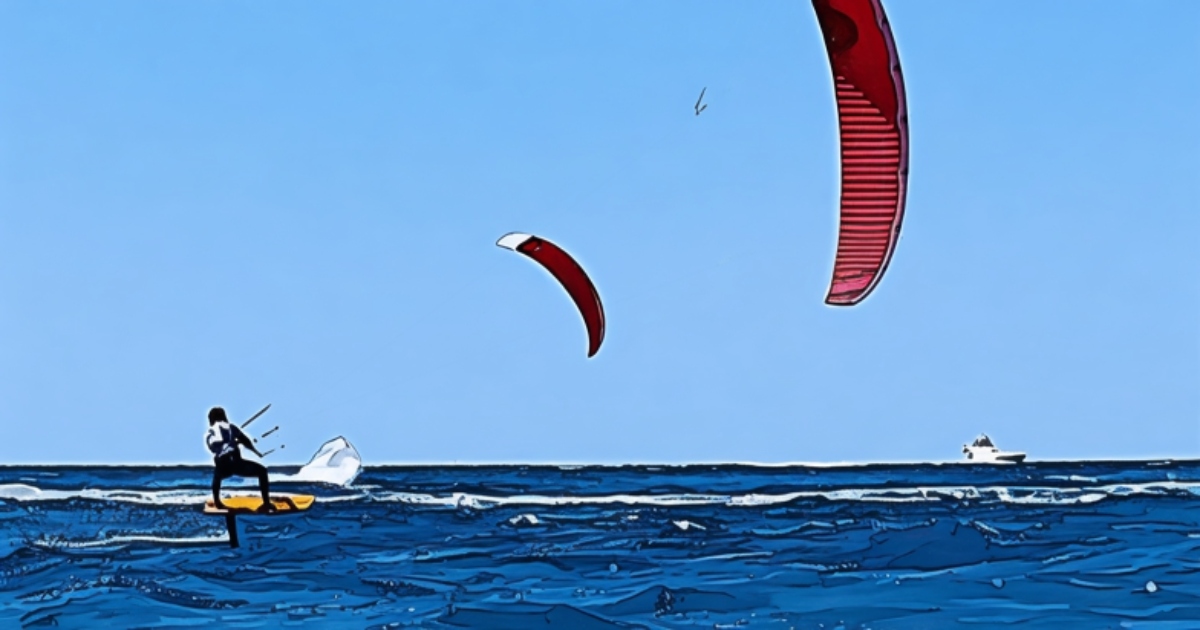Last Updated on 2024-08-16 , 4:59 pm
On 9 August 2024, 17-year-old Max Maeder gave Singapore one of the best birthday gifts: an Olympic medal.
But here’s the thing: how much do you know about kitefoiling?
And why have we not heard about it before?
If you’re as confused, fret not; here’s a simplified explanation of what kitefoiling is.
You’re welcome.
If you prefer to watch a video about this topic instead, here you go:
Everything About Kitefoiling & Why You’ve Not Heard of It Before
Here’s why this is important: when our athletes bring home an Olympic medal, parents flock to enroll their kids in that particular sport, and suddenly, every child’s Co-Curricular Activity (CCA) revolves around it.

Remember back in 2008, when the table tennis trio of Feng Tianwei, Li Jiawei, and Wang Yuegu clinched Singapore’s first Olympic medal since 1960?
Overnight, table tennis schools were bursting at the seams with eager paddlers and you couldn’t escape the sight of ping pong paddles everywhere you turned.
Fast forward to 2016, when Joseph Schooling made history by winning Singapore’s first-ever Olympic gold medal in swimming. Suddenly, swimming pools were packed with people who could barely stay afloat, and chai tow kway (fried radish cake) briefly became Singapore’s unofficial national dish, thanks to Schooling’s well-known love for the hawker favorite.
Now, with Max Maeder’s triumphant return to Singapore, bronze medal in hand for his performance in kitefoiling at the Paris 2024 Olympics, it’s only a matter of time before Changi Beach and East Coast Park are overrun with parents proclaiming their children as the next Olympic kitefoiling hopefuls.
But here’s the thing: this time around, the hype surrounding kitefoiling might actually translate into genuine potential for Singaporean athletes in this relatively new sport.
Kitefoiling is New & Has Its Olympic Debut
Before we look at kitefoiling, let’s take a step back and look at its predecessor, windsurfing.
You’re probably familiar with the sight of athletes balancing on a board attached to a sail, harnessing the wind’s power to propel themselves across the water.

Windsurfing has been an Olympic staple since 1984.
Enter kitesurfing, a close cousin of windsurfing.
Instead of having the sail attached to the board, kitesurfers hold onto a large, parachute-like kite that pulls them along.

While the elaborate gear might give the impression of a million-dollar setup, it’s actually just the kite and the board that are essential.
Now, kitefoiling takes kitesurfing to the next level.
The board is equipped with a hydrofoil beneath it, allowing the rider to soar up to a meter above the water’s surface, reducing drag and creating the illusion of gliding on a magic carpet.

But mastering kitefoiling is no easy feat. Athletes must control the kite and their direction using not just their hands, but their feet as well, all while reaching speeds of up to 82 kilometres per hour—nearly as fast as the speed limit on Singapore’s expressways.
This high-speed, high-stakes nature of the sport is why kitefoilers don extensive protective gear, making them look like they’re geared up for a grueling 6-day Army Training Evaluation Centre (ATEC) field exercise.
But it’s something else that makes Maeder’s victory sweeter.
The Significance of Kitefoiling’s Olympic Inclusion
What makes Max Maeder’s bronze medal even more remarkable is the fact that kitefoiling made its Olympic debut at Paris 2024. While windsurfing events have long been a part of the Olympic program, kitesurfing, and by extension, kitefoiling, only just entered the arena.
This means that the sport is still in its infancy, and Singapore has the unique opportunity to establish itself as a formidable presence in the world of competitive kitefoiling.
What’s next?
More Singaporeans are going to get wetter.




